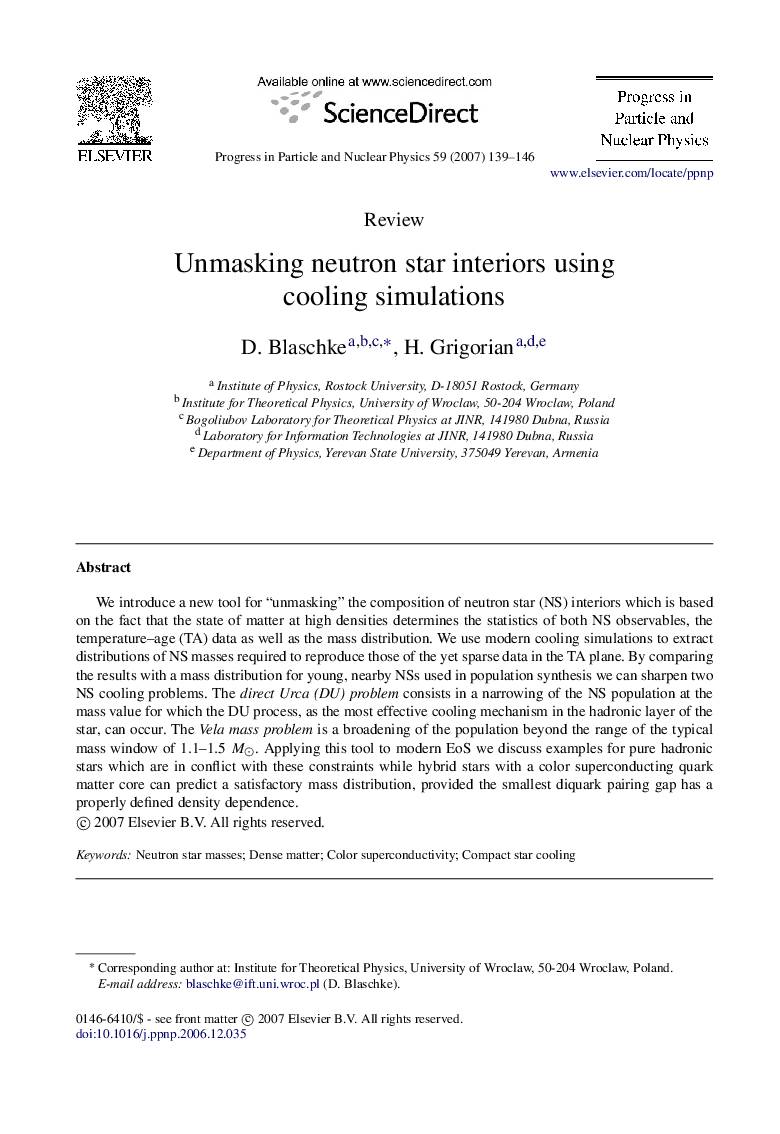| Article ID | Journal | Published Year | Pages | File Type |
|---|---|---|---|---|
| 1854581 | Progress in Particle and Nuclear Physics | 2007 | 8 Pages |
We introduce a new tool for “unmasking” the composition of neutron star (NS) interiors which is based on the fact that the state of matter at high densities determines the statistics of both NS observables, the temperature–age (TA) data as well as the mass distribution. We use modern cooling simulations to extract distributions of NS masses required to reproduce those of the yet sparse data in the TA plane. By comparing the results with a mass distribution for young, nearby NSs used in population synthesis we can sharpen two NS cooling problems. The direct Urca (DU) problem consists in a narrowing of the NS population at the mass value for which the DU process, as the most effective cooling mechanism in the hadronic layer of the star, can occur. The Vela mass problem is a broadening of the population beyond the range of the typical mass window of 1.1–1.5M⊙. Applying this tool to modern EoS we discuss examples for pure hadronic stars which are in conflict with these constraints while hybrid stars with a color superconducting quark matter core can predict a satisfactory mass distribution, provided the smallest diquark pairing gap has a properly defined density dependence.
